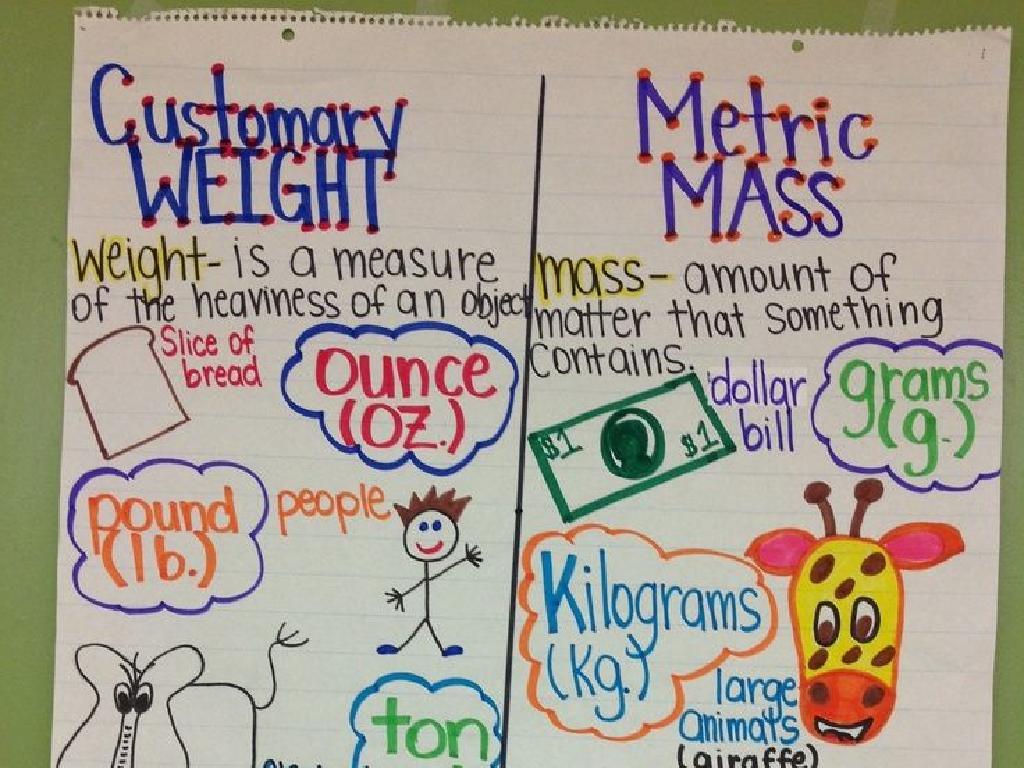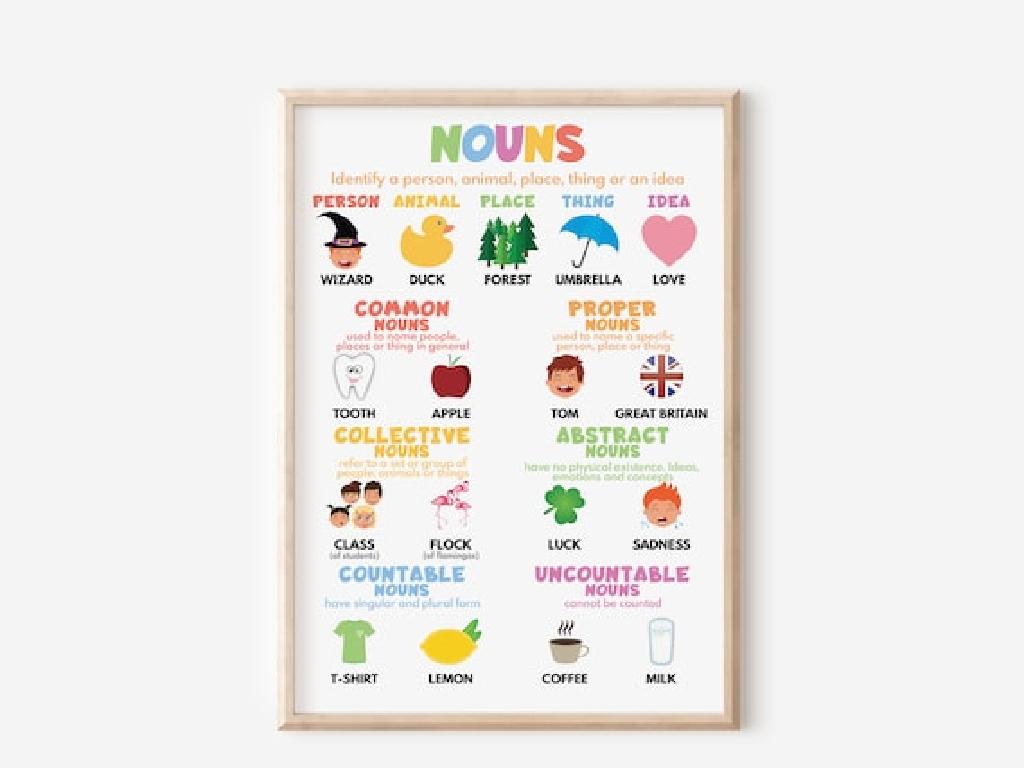Understand An Experimental Protocol About Evaporation
Subject: Science
Grade: Sixth grade
Topic: Designing Experiments
Please LOG IN to download the presentation. Access is available to registered users only.
View More Content
Exploring Evaporation Through Experimentation
– Define an experiment
– A test under controlled conditions to discover an unknown effect or law, to test or establish a hypothesis, or to illustrate a known law.
– Overview of the Scientific Method
– A step-by-step process used by scientists to solve problems or discover new information.
– Focus on Evaporation
– Evaporation is the process by which water changes from a liquid to a gas or vapor.
– Importance of experimental design
|
Begin with a definition of an experiment to set the foundation for understanding the scientific method. Explain the steps of the scientific method, emphasizing its importance in conducting experiments. Introduce evaporation as today’s topic, explaining that it’s a key process in the water cycle. Highlight the significance of designing experiments to explore concepts like evaporation, which will help students grasp the practical applications of scientific theories. Encourage students to think about where they see evaporation occurring in their daily lives, such as drying clothes or boiling water.
Understanding Evaporation
– Evaporation: Liquid to Vapor
– It’s when a liquid heats up & turns into gas
– Daily life evaporation examples
– Puddles drying, boiling water for pasta
– Significance of evaporation
– Regulates temperature, part of water cycle
– Evaporation in experiments
|
Evaporation is a fundamental concept in understanding physical changes in matter. It occurs when liquid water absorbs heat and changes to a gaseous state, known as vapor. This process can be observed in everyday life, such as when puddles dry up after rain or when water boils away while cooking. Evaporation plays a crucial role in the Earth’s water cycle and helps regulate temperature and climate. In experiments, understanding evaporation can help students grasp the principles of phase changes and energy transfer. Encourage students to think of more examples of evaporation they’ve encountered and to consider how this process affects the environment and human activities.
Experimental Protocol on Evaporation
– Define the evaporation problem
– What question are we trying to answer about evaporation?
– Formulate a hypothesis
– Make an educated guess on what will happen in your experiment
– List materials required
– Gather all items needed to conduct the evaporation experiment
– Write the procedure steps
– Detail each step to follow during the experiment clearly
|
This slide introduces students to the fundamental steps of creating an experimental protocol focused on evaporation. Start by defining the problem, which could be understanding the rate of evaporation under different conditions. Then, guide students to formulate a hypothesis based on their prior knowledge. Next, list all the materials they will need for the experiment, such as water, beakers, heat source, and a stopwatch. Finally, help them write a clear, step-by-step procedure that they can follow during the experiment. Emphasize the importance of precision and clarity in experimental protocols to ensure reproducibility and accurate results. Encourage students to think critically at each step and to document their observations meticulously.
Designing an Evaporation Experiment
– Identify evaporation variables
– Variables affect evaporation like temperature, surface area, and air movement.
– Differentiate controlled/uncontrolled
– Controlled variables are kept constant; uncontrolled variables are not managed.
– Measure evaporation rate
– Use a consistent method to measure how quickly water evaporates.
– Record & analyze results
– Keep detailed notes on observations and data to understand the outcomes.
|
This slide introduces students to the scientific process of designing an experiment to study evaporation. Start by discussing the variables that can affect evaporation, such as temperature, surface area, and air movement. Explain the importance of controlled variables that must be kept the same throughout the experiment to ensure fair testing, as opposed to uncontrolled variables. Teach students how to measure the rate of evaporation, perhaps by marking the level of water in a container over time. Emphasize the importance of recording and analyzing results to draw conclusions. Provide examples of how to set up a simple evaporation experiment, and encourage students to think critically about how to control variables and accurately measure results.
Setting Up Our Evaporation Experiment
– Gather all necessary materials
– Beakers, water, heat source, thermometer, and timer
– Wear safety gear at all times
– Use goggles, gloves, and aprons to ensure safety
– Observe changes carefully
– Look for water level decrease and temperature change
– Record observations systematically
– Use a journal to note time intervals and measurements
|
This slide is designed to guide students through the initial steps of setting up an evaporation experiment. Students should collect all required materials, including beakers, water, a heat source, a thermometer, and a timer. Emphasize the importance of safety by wearing protective gear such as goggles, gloves, and aprons. Teach students to observe the water level and temperature changes as the water heats, which are indicators of evaporation. Encourage them to record their observations in a systematic way, noting the time and measurements at regular intervals. This will help them understand the process of evaporation and the importance of careful observation and documentation in scientific experiments.
Predictions and Hypotheses in Evaporation Experiments
– Understanding educated guesses
– An educated guess based on knowledge
– Estimating water evaporation rate
– How quickly do we think water will disappear?
– Exploring factors affecting evaporation
– Temperature, air flow, surface area
– Formulating a hypothesis
– A statement we can test in our experiment
|
This slide introduces students to the concept of making predictions and formulating hypotheses in the context of an evaporation experiment. Start by explaining that an educated guess is a prediction based on prior knowledge and reasoning. Encourage students to think about how fast they believe water will evaporate and what factors might influence this rate, such as temperature, air flow, and the surface area of the water. Guide them to turn their educated guess into a hypothesis, a testable statement that they will investigate during the experiment. Emphasize the importance of a hypothesis in the scientific method as it sets the stage for experimentation and discovery.
Conducting the Evaporation Experiment
– Follow the steps with care
– Each step is crucial for accurate results
– Observe and note any changes
– Record color, size, and time changes
– Practice patience and precision
– Accurate science takes time and careful measurement
– Understand results and conclusions
|
This slide is designed to guide students through the process of conducting an experiment on evaporation. Emphasize the importance of following the experimental protocol step by step to ensure the validity of their results. Encourage students to be observant and to take detailed notes on any changes they notice during the experiment, such as changes in color, size, or state of the material. Remind them that scientific experiments require patience and precision in both the execution of the experiment and the measurement of results. Finally, discuss how to interpret the results and draw conclusions from their observations. Provide examples of potential observations and outcomes to help them understand what to expect.
Analyzing Experimental Results on Evaporation
– Reviewing our findings
– Comparing findings to hypothesis
– Did the results align with our predictions?
– Discussing experimental errors
– Consider measurement inaccuracies or environmental factors
– Suggesting improvements
– How can we refine the experiment for better accuracy?
|
This slide aims to guide students through the critical analysis of their evaporation experiment results. Students should first summarize their findings, noting key observations. Next, they’ll compare these results to their initial hypothesis to see if their predictions were correct. It’s crucial to discuss any potential errors that may have occurred during the experiment, such as measurement mistakes or uncontrolled variables, and how these could have affected the outcome. Finally, students should think about ways to improve the experiment, perhaps by controlling variables more tightly or by repeating trials for more consistent data. Encourage students to understand that errors and improvements are a natural part of scientific inquiry and lead to better experimental design.
Class Activity: Mini Evaporation Experiment
– Form small experimental groups
– Design a mini evaporation experiment
– Consider container size, water volume, or temperature
– Choose variables to test effects on evaporation
– Could be sunlight vs. shade, surface area, air flow, etc.
– Present findings to the class
|
This class activity is aimed at teaching students about the scientific method through a hands-on mini evaporation experiment. Divide the class into small groups and have each group design their own experiment to understand the factors affecting evaporation. Encourage them to choose different variables such as temperature, surface area, air flow, or presence of sunlight. Provide guidance on how to set up a controlled experiment. After conducting the experiments, each group will present their findings, discussing the impact of the chosen variables on the rate of evaporation. Possible activities: 1) Evaporation with different liquids, 2) Evaporation at different temperatures, 3) Evaporation with varying surface areas, 4) Evaporation with and without wind, 5) Evaporation in sunlight vs. shade.
Conclusion: Evaporation Experiment Insights
– Recap of experimental protocol
– Significance of protocol adherence
Following steps ensures accurate results
– Key learnings about evaporation
Evaporation is a cooling process affected by various factors
– Open floor for questions
Encourage curiosity and understanding
|
As we conclude today’s lesson on evaporation, it’s crucial to review the steps we’ve taken in our experimental protocol. Emphasize the importance of following these steps meticulously to ensure the accuracy and reliability of our results. Highlight the key points we’ve learned about evaporation, such as its role as a cooling process and the factors that can affect its rate, like temperature, surface area, and air movement. Finally, open the floor for a question and answer session, encouraging students to ask questions about the experiment, the concept of evaporation, or any part of the lesson they may want to revisit. This will help solidify their understanding and give them confidence in their knowledge.
Homework: Mini Evaporation Experiment Report
– Formulate your hypothesis
– Make an educated guess about the experiment’s outcome
– Detail the experiment procedure
– Write step-by-step actions taken during the experiment
– Record and analyze results
– Include data and observations made during the experiment
– Conclude your findings
– Reflect on the experiment and discuss if your hypothesis was correct
|
Students are tasked with conducting a mini evaporation experiment as homework and writing a report on their findings. The report should begin with a hypothesis, an educated guess based on their understanding of evaporation. They must then outline the procedure of their experiment in a clear, step-by-step format. As they conduct the experiment, students should carefully record all results, including any measurements and observations. Finally, they should analyze their results to draw a conclusion, reflecting on whether their hypothesis was supported by the experiment. The report is due by the next science class, and students should be prepared to discuss their experiment and findings.





